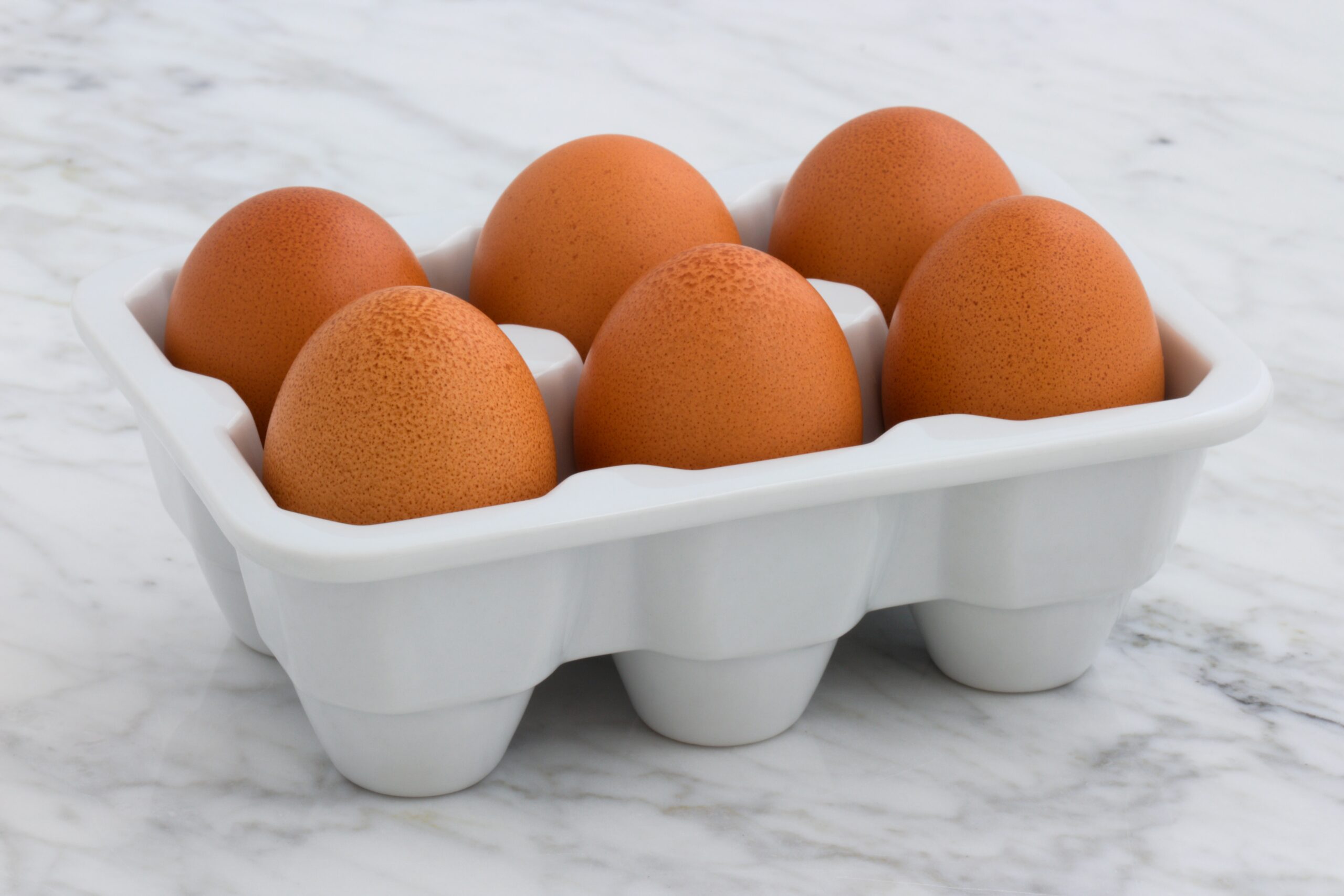
Introduction
Eggs are a nutritional powerhouse. They provide the body with 13 vitamins and minerals, high-quality protein, and important antioxidants. Eggs are also tasty, convenient, and good value for money, making them an excellent inclusion in a well-balanced diet. Eggs are accepted by all communities without restriction to any religion and are consumed globally by children, adults, and old people. Food safety is important with eggs as it can cause health risks if eggs are not handled, stored, and prepared safely. Some eggs may be contaminated with bacteria, which can cause serious food poisoning in susceptible populations. Educational programme of the public about the health hazards due to the consumption of raw eggs is required.
Spoilage of egg
The egg is very perishable and the quality can be severely reduced during the time of storage due to chemical changes or microbial spoilage and non-microbial spoilage. The changes occurring in the eggs are affected by the environmental conditions, temperature, moisture, the material used for packaging and storage time. Their high water content (74%) and high nutrient content make them susceptible to microbial spoilage.
1. Contamination of eggs
Freshly laid egg is sterile but the egg shell soon becomes contaminated by fecal matter of hen by nest, by washing water, by handling, and by other material in which it is stored. A total number of micro organisms per shell of hen’s egg have been reported to range from 102-107 with average of 105. Salmonella spp. may be found on shell or inside egg.
2. Non-microbial spoilage of eggs
These include loss of moisture and hence loss of weight during long-term storage. Change in the physical state of egg contents also occurs during long-term storage. They include thinning of egg white and breaking of yolk membrane. As the yolk membrane weakens and break, yolk becomes flat and homogenously mixed in egg white.
3. Microbial spoilage of eggs
In order to cause spoilage of shell of egg, microorganisms must contaminate the shell, penetrate through the pores in shell and inner membrane, reach the eggwhite and yolk and grow there. Some microorganisms cannot grow in egg white but can grow rapidly in egg yolk. Change in storage temperature facilitates penetration of organism through shell and hence facilitates microbial spoilage.
- Bacterial spoilage of egg
Bacteria are more common spoilage organism than mold. Bacteria cause rots in egg. When bacteria grow within the egg, they decompose the content and form byproducts. This result in the development of characteristic odor, appearance or color.
Green rot
It is caused by Pseudomonas fluorescence. Green egg white shows fluorescence when exposed to UV light. In later stage of spoilage, egg yolk disintegrates and masks green color of egg white. Odor is lacking or fruity or sweetish.
Colorless rot
It may be caused by Pseudomonas, Acetobacter, Acinatobacter, and coliform. In the later stage of spoilage, egg yolk disintegrates or at least has incrustations.
Black rot
It is caused by Proteus and sometimes Pseudomonas and aeromonas. Egg yolk blackens and then breakdown to give the whole egg content muddy brown color. Odor is putrified due to H2S.
Pink rot
It is caused by Pseudomonas usually at the later stage of green rot. They are similar to colorless rot except that pink coloration occurs in yolk and white.
Red rot
It is caused by Serrotia marcesceus. These eggs are distinguished by a rod dissociation of egg white and the surface of the yolk in ammonical i.e. putrified odor.
Custard rot
In this rot, the yolk is incrusted with custard-like material and occasionally has green to olive pigment. The albumin becomes thin with orange coloration. This type of spoilage is caused by Citrobacter and Proteus vulgaris.
- Fungal spoilage of egg
Fungal spoilage goes through following stages.
Pin spot molding
In this case, small compact colonies of mold appear on the shell and usually just inside the shell. The color of pin spots varies with the type of mold. For example, Cladosporium give black spot and Sporotrichum give pink spot.
Superficial fungal spoilage
This occurs if eggs are stored in atmosphere of high humidity. In this case, molds grow on shell in the form of whiskers.
Fungal rotting:
It is the final stage of spoilage by mold. In this case, mycelium of the mold grows through the pores and cracks in the shell. Jellying of egg white may occur and colored spots may be produced. Hypha of mold grows through the yolk membrane and ruptures it, so that yolk mixes with the white.
Molds causing spoilage of egg include Penicillium, Sporotrichum, Mucor, Botrytis, Alternaria, Thamnidium, etc.
Preservation of eggs from spoilage
Eggs have several ways of protecting themselves from microbial spoilage. Shell and underlying membrane serve as the first line of defense to prevent the entry of microorganisms. In addition to the physical barrier, egg albumin is not a suitable growth medium and discourages the growth of many microorganisms. Characteristics of egg albumin that discourage microbial growth include pH of 9-10, low level of simple nitrogenous compound, apoprotein that binds riboflavin, avidin that binds biotin, ovotransferrin that chelate iron, and lysozyme that hydrolyze peptidoglycan of bacteria. Despite physical barriers and other anti-microbial factors, many microorganisms can invade and cause spoilage of eggs. Therefore, the following methods are employed for its preservation.
Asepsis
Great care should be taken to reduce contamination by fecal matter by dust and nest. When eggs are broken for freezing or drying, a spoiled egg should be discarded and contamination from equipment can be reduced by sanitizing it.
Removal of microorganism
Various methods can be employed to remove dirt and faecal matter from egg shell. Dry cleaning by sandblasting removes dirt and bloom. Washing with warm water removes dirt, bloom, and apart of microorganisms but encourages penetration of bacteria into egg through pores in shell. Use of disinfectant in washing water reduces the number of microorganisms.
Preservation by use of heat
Heat treatment suggested include heating whole egg in oil for 10 minutes at 600C or in water at 54.4oC for 80 min, Immersion of egg in boiling water for few second, immersion of egg in hot detergent, Sanitizer solution at 43.3oC to 54.4oC. Pasteurization is required for most egg products. Because of the heat coagulability of egg, stabilization is required before pasteurization. This includes the addition of aluminum salt and adjustment of pH.
Preservation by low temperature
Chilling
Eggs are commercially stored for six months or longer, at a temperature of -1.7oC to – 0.55oC and relative humidity of 70-80%. If the temperature is greater than -1.67, there is more rapid penetration of microorganisms and growth into egg and more physical and chemical changes. Special treatment like impregnation of egg shell with colorless and odorless mineral oil keeps out moisture slows desiccation and air penetration during chilling.
Freezing
Eggs are first washed with 200-500ppm chloride solution and broken. Egg yolk and egg white are separated and they are frozen separately at -17.8oC to -20.5oC.
Preservation by drying
Eggs are first washed with chloride solution, broken and then yolk and white are separated. A liquid egg is then dried by drum drying or spray drying method. Glucose should be removed from egg before drying because it causes the browning of an egg.
Preservation by chemical preservative
Preservatives may be used on shells of egg in the atmosphere around them and on containers for egg. Waxing and oiling of shell keep the shell dry, reduce the penetration of oxygen into the egg and reduce the passage of carbon dioxide and moisture out. Immersion of whole egg in the solution of sodium silicate is also a good preservative. Use of CO2 in ozone in the storage atmosphere improves the quality of egg.
Food safety
Contamination of eggs poses a high risk to food safety. Use of good hygiene practices (GHP) can maintain the high quality and safety of eggs. The staff handling eggs should have knowledge and skills in food safety and hygiene. Eating of raw egg is not recommended. Do not use raw or soft-boiled eggs in food preparation that will not be heat treated or cooked. Keep the egg shell dry to prevent penetration of microbes. Eggs must be properly dried before packing. Maintain the egg quality by using good packing, storage, and transport methods. Eggs should be kept at a cool temperature following packing and throughout transportation. Do not send broken egg, or soiled egg to the market for sale. It is important to discard the eggs that are broken and leaking. Homemade foods containing raw or lightly cooked eggs are often linked to food poisoning. Hence, thorough cooking is very important to assure the safety of eggs. It is advised to use pasteurized eggs or egg products. Do not reheat boiled eggs in the microwave.
Boiled egg, fried egg, backed egg, poached egg, boiled egg, and scrambled egg should be cooked until both the white and the yolk are firm. The ideal conditions for the storage of eggs are about –10°C and between 75-80% relative humidity. There is a risk of mould spoilage when relative humidity is too high. Washing of hands, utensils, equipment, and work surfaces with hot, soapy water before and after they come in contact with raw eggs and raw egg containing foods is highly imperative. Egg can become contaminated from various sources, hence, it is important to maintain sanitary conditions. The consumption of contaminated egg can cause salmonellosis in humans. Outbreaks of salmonellosis involving eggs or egg containing foods result due to inadequate refrigeration, improper handling, and insufficient cooking. It is imperative to maintain high quality and safety by using good hygiene, cooking, refrigeration, and handling practices.

Manoj Kumar Singh
Assistant professor, Department of Livestock Production Management
S.V.P. University of Agriculture and Technology, Meerut, Pin-250110
Jinu Manoj
Disease Investigation Officer, College Central Laboratory
College of Veterinary Sciences, Lala Lajpat Rai University of Veterinary and Animal Sciences, Haryana, Pin-125004
















